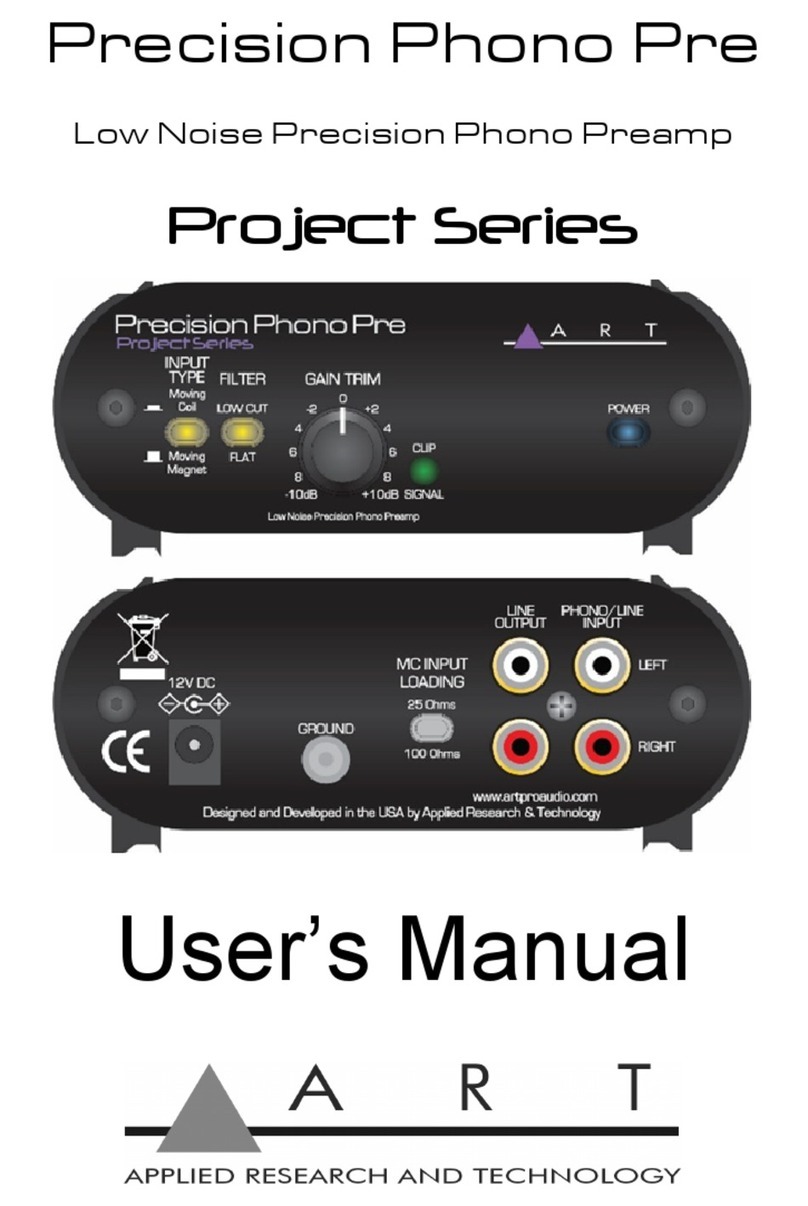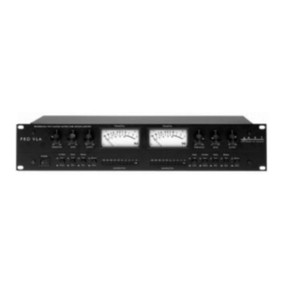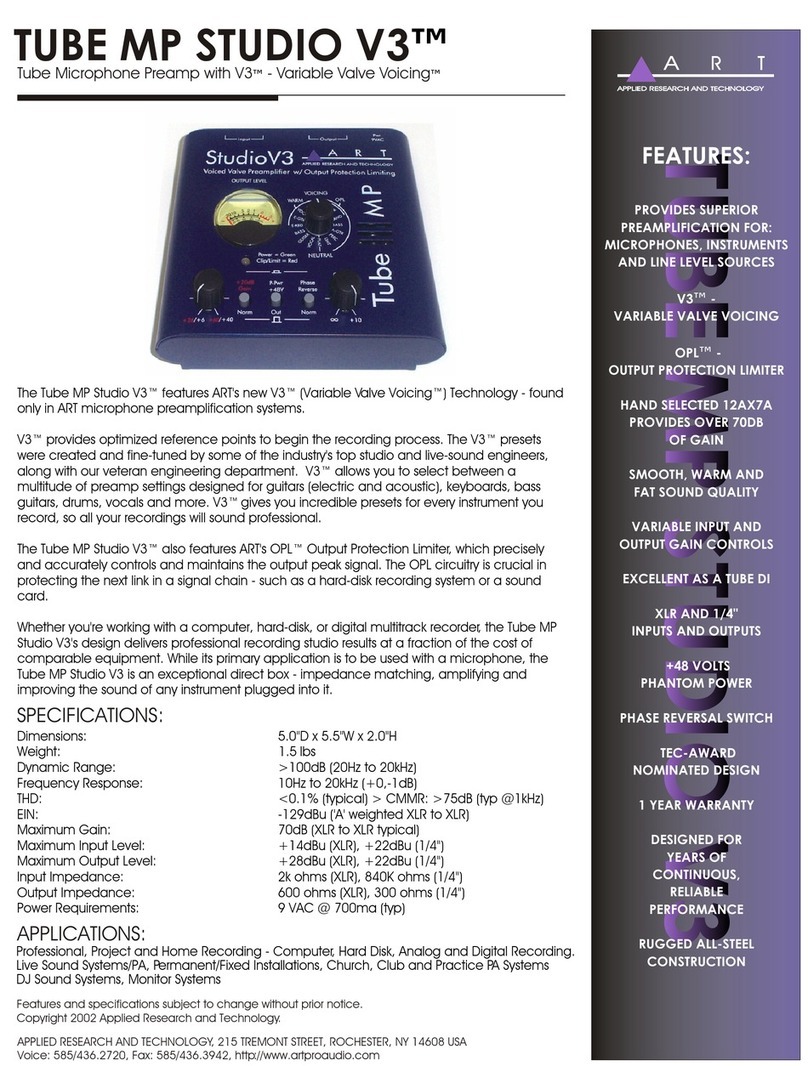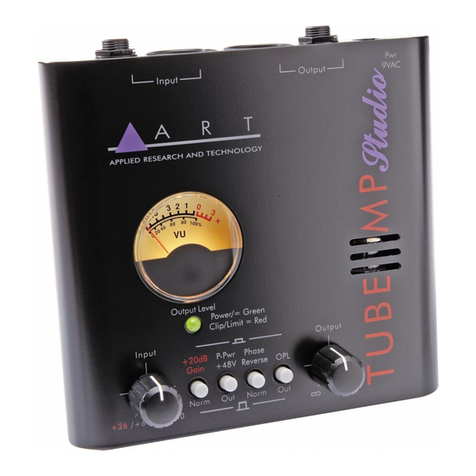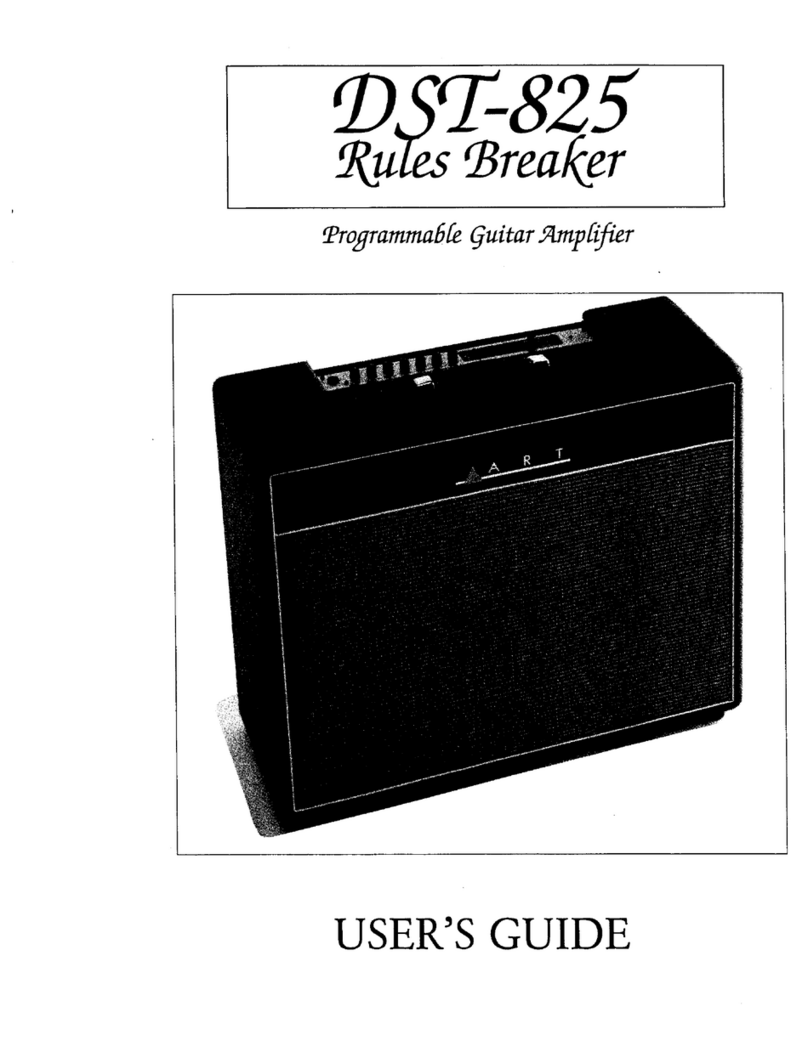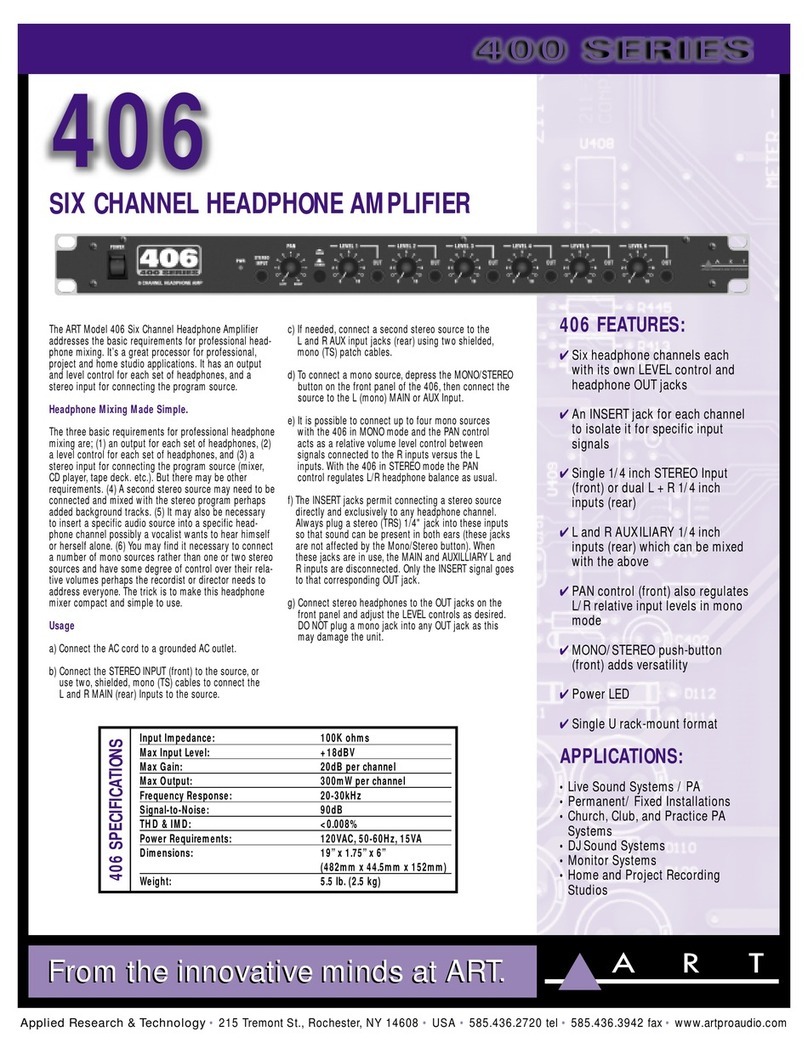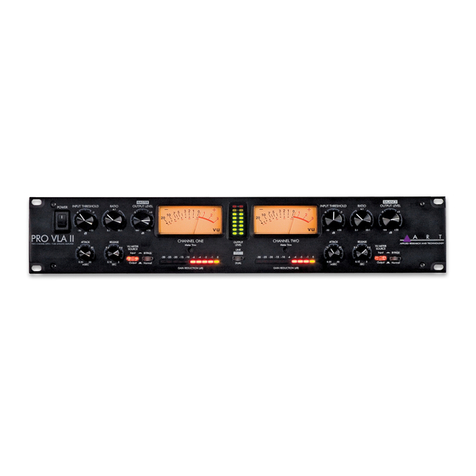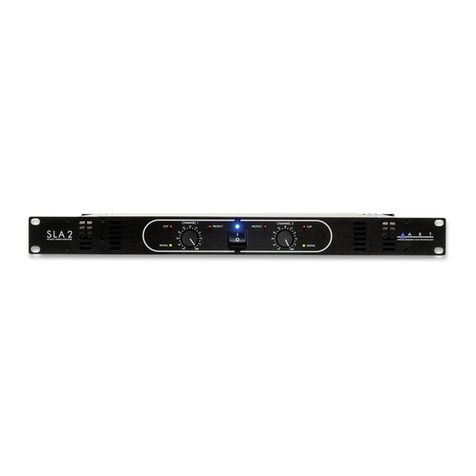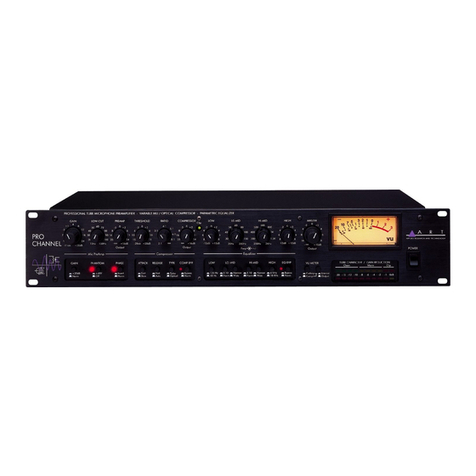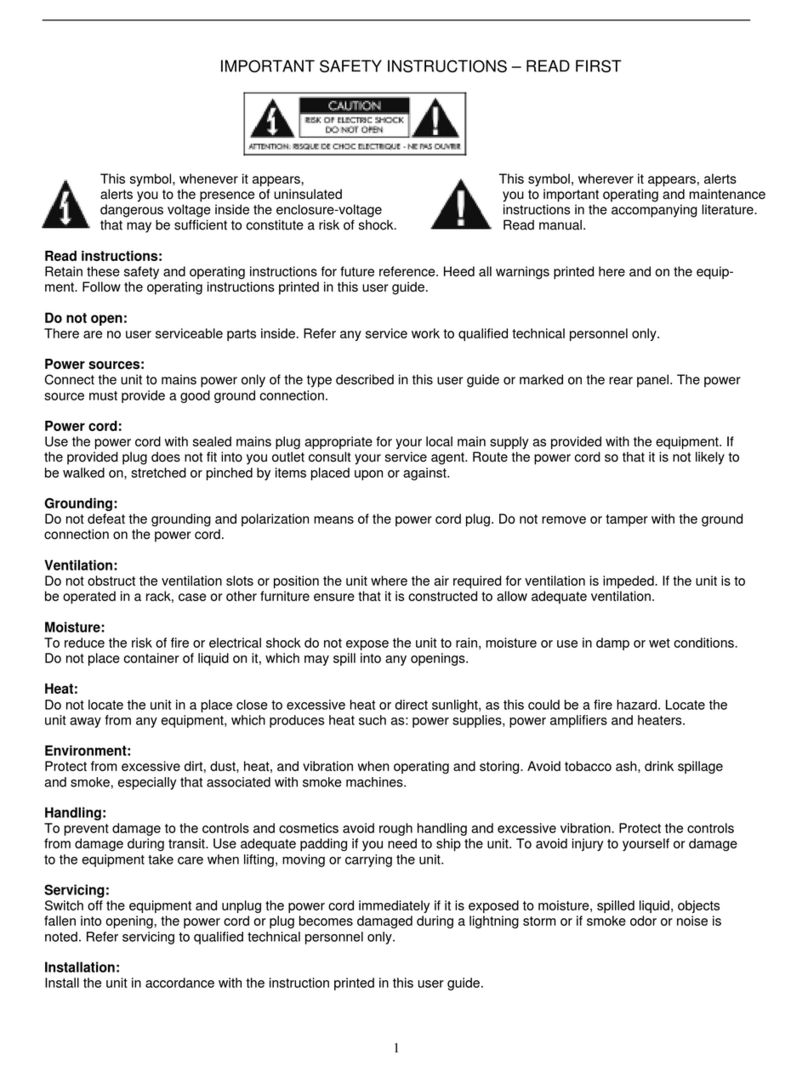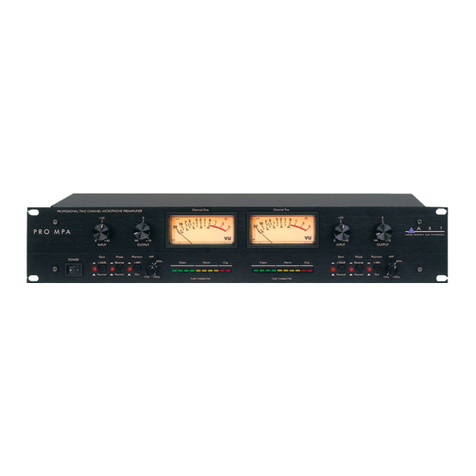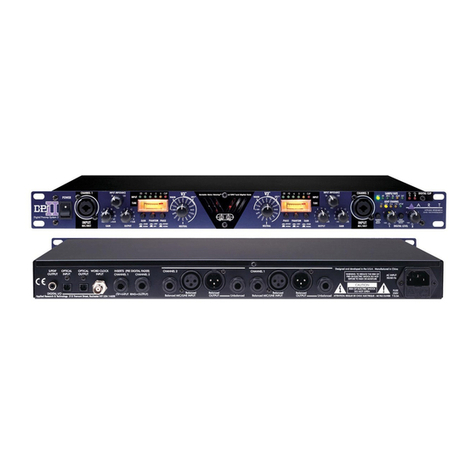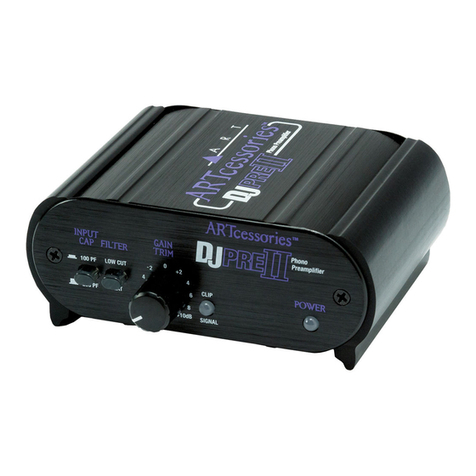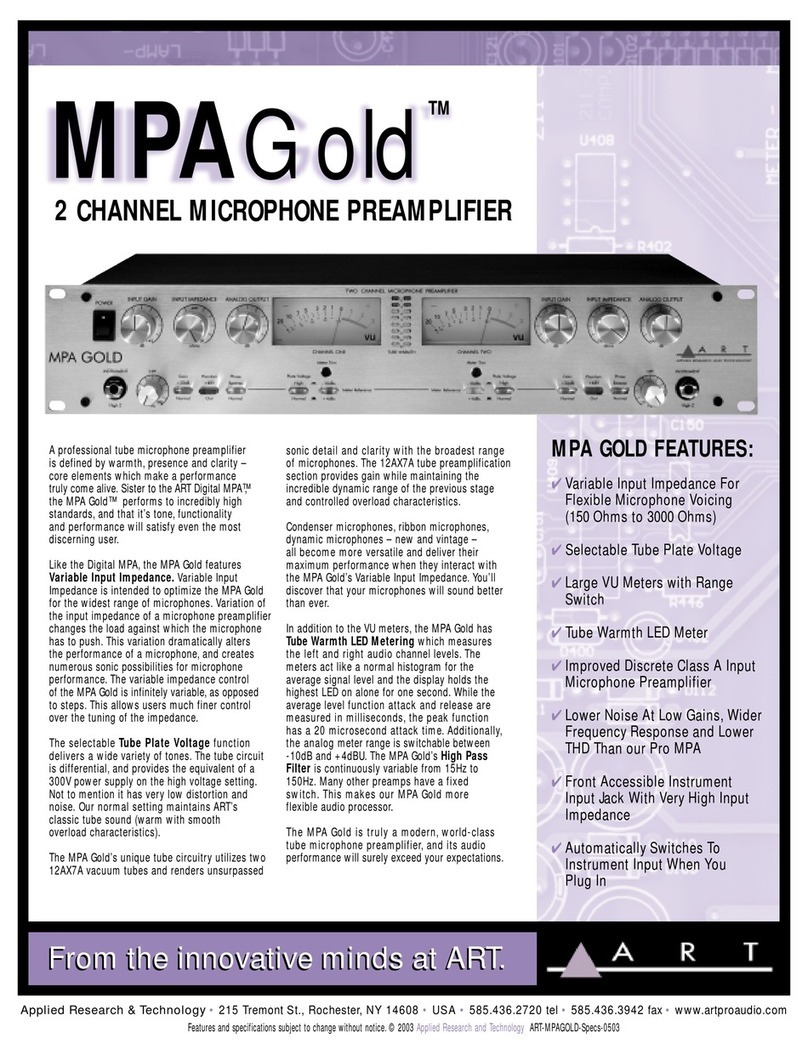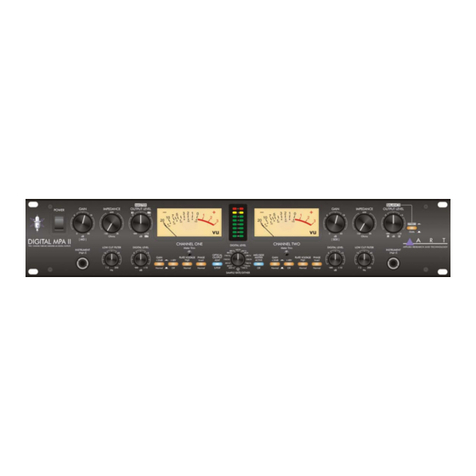
- 1 -
IMPORTANT SAFETY INSTRUCTION – READ FIRST
This symbol, whenever it appears, This symbol, wherever it appears, alerts
alerts you to the presence of uninsulated you to important operating and maintenance
dangerous voltage inside the enclosure-voltage instructions in the accompanying literature.
that may be sufficient to constitute a risk of shock. Read manual.
Read instructions:
Retain these safety and operating instructions for future reference. Heed all warnings printed here and on the equipment.
Follow the operating instructions printed in this user guide.
Do not open:
There are no user serviceable parts inside. Refer any service work to qualified technical personnel only.
Power sources:
Connect the unit to mains power only of the type described in this user guide or marked on the rear panel. The power
source must provide a good ground connection.
Power cord:
Use the power cord with sealed mains plug appropriate for your local main supply as provided with the equipment. If the
provided plug does not fit into you outlet consult your service agent. Route the power cord so that it is not likely to be
walked on, stretched or pinched by items placed upon or against.
Grounding:
Do not defeat the grounding and polarization means of the power cord plug. Do not remove or tamper with the ground
connection on the power cord.
Ventilation:
Do not obstruct the ventilation slots or position the unit where the air required for ventilation is impeded. If the unit is to be
operated in a rack, case or other furniture ensure that it is constructed to allow adequate ventilation.
Moisture:
To reduce the risk of fire or electrical shock do not expose the unit to rain, moisture or use in damp or wet conditions. Do
not place container of liquid on it, which may spill into any openings.
Heat:
Do not locate the unit in a place close to excessive heat or direct sunlight, as this could be a fire hazard. Locate the unit
away from any equipment, which produces heat such as: power supplies, power amplifiers and heaters.
Environment:
Protect from excessive dirt, dust, heat, and vibration when operating and storing. Avoid tobacco ash, drink spillage and
smoke, especially that associated with smoke machines.
Handling:
To prevent damage to the controls and cosmetics avoid rough handling and excessive vibration. Protect the controls form
damage during transit. Use adequate padding if you need to ship the unit. To avoid injury to yourself or damage to the
equipment take care when lifting, moving or carrying the unit.
Servicing:
Switch off the equipment and unplug the power cord immediately if it is exposed to moisture, spilled liquid, objects fallen
into opening, the power cord or plug becomes damaged during a lightning storm or if smoke odor or noise is noted. Refer
servicing to qualified technical personnel only.
Installation:
Install the unit in accordance with the instruction printed in the user guide.


